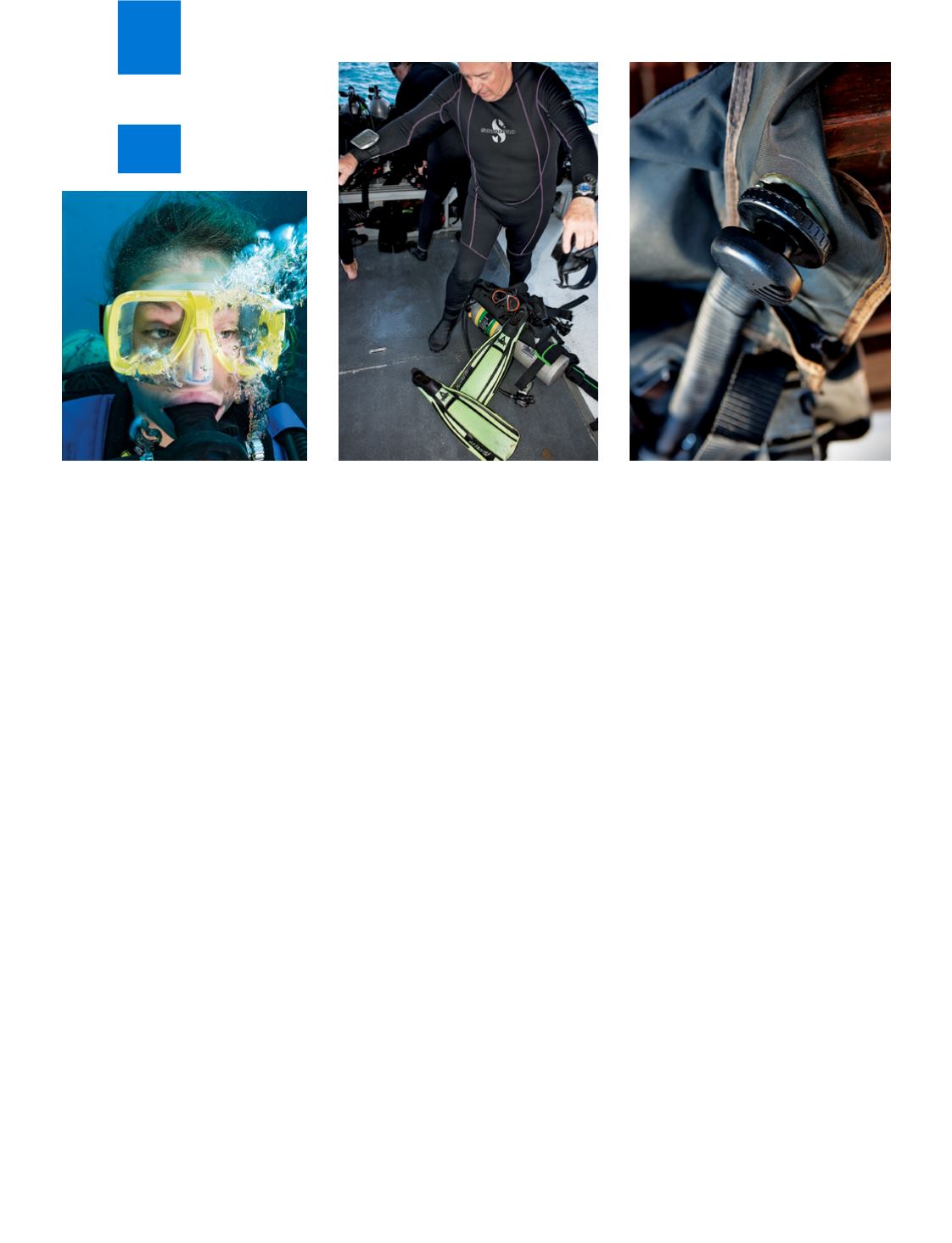
Y
ou’ve finally booked your next dive trip, and you
can’t wait to relax into the cool, blue depths.
But a nagging thought creeps into your mind:
“Will my dive gear perform as expected?” You
remember your last trip when your alternate second-stage
regulator began to free flow just as you were about to get in
the water. The captain quickly replaced the hissing regulator,
but he said he noticed some corrosion and sand, which
probably caused the free flow. That dive was saved, but you
worry your equipment might act unpredictably again.
Remember that your dive gear is life-support equipment
— designed to help you breathe, see and control your
movement underwater. To be confident your gear will
function properly, you should develop a few important
habits. First, thoroughly rinse all your dive gear in clean
fresh water after every dive or at least every day of diving.
This is especially true when diving in the ocean; rinsing
away as much salt as possible will help keep the equipment
functioning as intended. After rinsing, allow gear to dry
completely in a cool, shady and well-ventilated area before
you put it away.
Always be conscious of your gear’s exposure to the sun.
Ultraviolet (UV) radiation can be very damaging to dive
equipment. Some exposure to the sun may be inevitable, but
the more you can limit it, the better. On the way to a dive
site, store your gear in the shade if possible. If there isn’t any
shade available, cover your equipment with a towel.
Here are some recommendations on how to care for specific
pieces of dive gear to maximize its longevity and reliability.
Mask, Snorkel, Fins and Computer
Treat these items carefully so they aren’t crushed by heavier
gear. It’s also a good idea to keep this equipment (as well as
the rest of your gear) well organized to minimize the risk
of it getting stepped on or kicked overboard. After rinsing
and drying these items, store them properly. The box that
came with your mask, for example, will help prevent other
equipment from crushing or deforming the lenses or silicon
skirt. Remember to check the battery icon on your dive
computer, and replace the battery as needed.
Wetsuit, Boots, Gloves and Hood
Neoprene can be especially susceptible to UV damage, so
take extra care to keep your wetsuit and other neoprene
items in the shade. If your wetsuit takes on an unpleasant
odor, add some wetsuit shampoo to the postdive rinse tub.
After rinsing, hang your wetsuit inside out on a wetsuit
hanger, and allow it to dry completely before you turn
it right side out. If it’s possible to turn your gloves and
hood inside out as well, do so. Check the manufacturer’s
recommendations on wetsuit zipper maintenance; some
require periodic lubrication.
Regulator Assembly
Test your regulator’s function as soon as possible after you
board a dive boat so you can address any problems before you
get too far away from the dive shop. If possible, clean your
regulator assembly while it’s still connected to a scuba cylinder
and pressurized. Soak the components for several minutes to
GEAR
T E X T B y C o l b y C l i n e / P H O T O S B Y S T E P H E N F R I N K
Maintain Your Gear
108
|
FALL 2013


